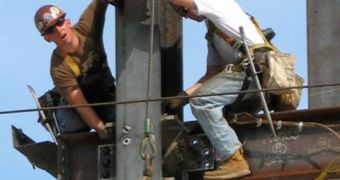According to a new Canadian study of workplaces, more than 60 percent of employees in the metallurgy and saw milling sectors are daily exposed to noises that exceed by far the maximum health limits approved by the government. This state of affairs has been directly linked to an increased number of accidents, both at the work sites and on the streets, and to an increased risk of workers going deaf on account of the constant noise exposure. Several institutions have collaborated for the new research, which will be published in three scientific journals at the same time.
“More than 60 percent were exposed to noises exceeding the norm of 90 decibels (dB) per day, which is equivalent to the sounds that emanate when a subway enters a station,” University of Montreal School of Speech Therapy and Audiology professor Michel Picard, who has led the new research with colleague Tony Leroux, explains. More than 53,000 Canadian employees have been surveyed for the study, on which investigators from the Université Laval and the Institut National de Sante Publique du Quebec have also contributed.
The results of the investigation will be published in three different scientific journals – Occupation Environmental Medicine, Accident Analysis and Prevention, and Traffic Injury Prevention – because the issues that are covered concern the readers of all three publications. The researchers also opine that the noise regulations in effect in Quebec are obsolete, because in other parts of North America, and in other Canadian provinces, the noise limit has long since been lowered to 85 dB. In any case, this area has more lax legislation, but also breaks it the most.
Statistics show that 5,287 of the 43,250 reported work accidents in the area have happened due to exposure to noise exceeding 90 dB. These workers have also proven to be 6.2 percent more likely to trigger a car accident or a work accident than employees who work all day below the noisy threshold. “What is particularly worrying is the young age of the workers. Technology exists to reduce noise in the workplace. All that's missing is the political will,” the scientist concludes by saying.

 14 DAY TRIAL //
14 DAY TRIAL //